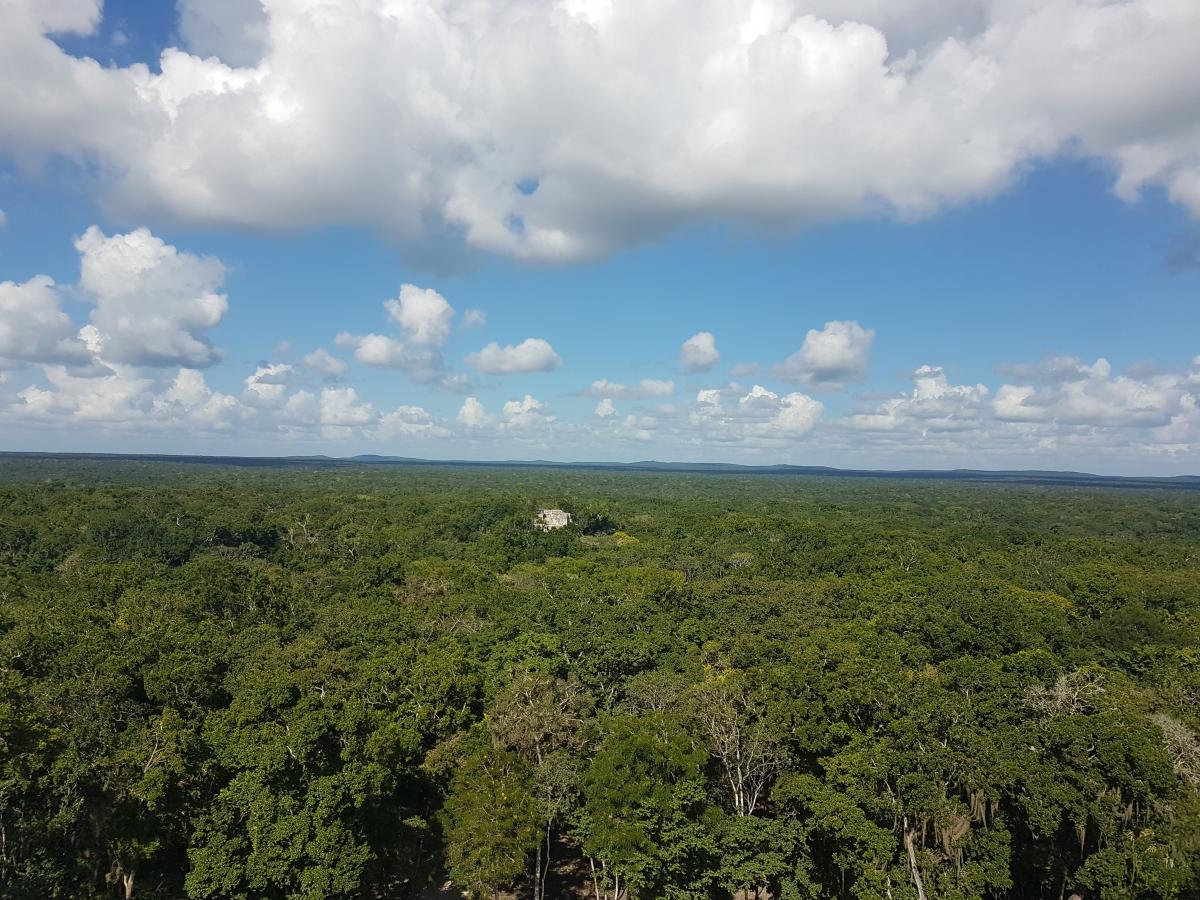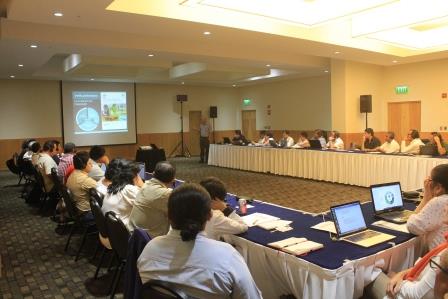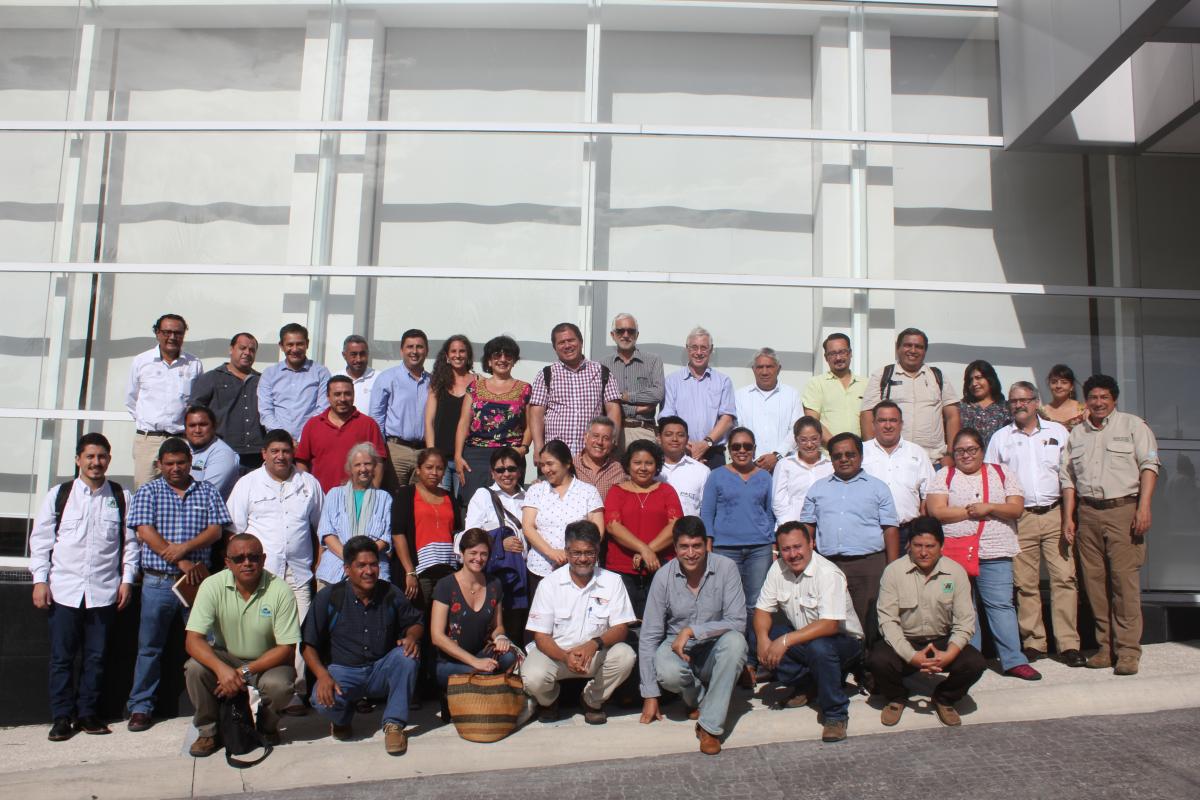A regional initiative to improve the effective management of the protected areas of the Selva Maya is promoted
It is expected to consolidate a tool for continuous improvement in the Selva Maya protected areas management, according to the same comparative scheme between Mexico, Guatemala and Belize governments, using internationally recognized standards, such as the Green List of the International Union for Conservation of Nature (IUCN).
Chetumal, Mexico, June 2018. The IUCN Regional Office for Mexico, Central America and the Caribbean, along with the support of the protected area agencies of the three governments that share the Selva Maya - Mexico, Belize and Guatemala- have driven a process of review and evaluation of management effectiveness tools, to propose a regional reference framework which improves the management of these areas, by adapting the IUCN Green List standard.
This initiative is particularly relevant because it is a joint effort of three governments ruled by particular regulations that come together for the conservation and good management of their protected areas. The National Commission of Natural Protected Areas of Mexico (CONANP, as per the Spanish acronym), the National Council of Protected Areas of Guatemala (CONAP, as per the Spanish acronym), and the Forestry Department of the Ministry of Agriculture, Forestry, Fisheries, Environment and Sustainable Development (MAFFESD) are involved in the process.
Additionally, governments are expected to boost the nomination of some of their areas to the International Green List Program promoted by IUCN, which describes a set of criteria and indicators for successful conservation in protected areas and thereby provides an international benchmark for quality. Currently, there is an intention to nominate Calakmul and Sian Ka'an Biosphere Reserves in Mexico.
As part of these efforts, a workshop was held in Chetumal, Mexico, from June 19 to 21, in which technicians, directors and managers of the protected areas of the region as well as international experts discussed and agreed on a proposal of the regional framework of the Selva Maya protected areas management effectiveness. It is also expected to establish a Regional Evaluation Experts Group (EAGL), which will be responsible for validating the adapted standard and supervising its use for management effectiveness assessments in the region.
"Through this workshop we promote the revision of tools that help improve the protected areas management processes, as well as the systematization of data that provide the necessary information for decision making. To meet this challenge, a process of consolidation of an integrated system has been initiated to evaluate the advances in management effectiveness under the same scheme, taking the "Assessing effectiveness" tool and the Green List standard for Protected and Conserved Areas well managed, both of IUCN, as a reference", explained José Courrau, IUCN Senior Expert in Protected Areas.
The event was attended by Marc Hockings, creator of the IUCN Green List, who has more than 20 years of experience in management effectiveness, as a university professor and as an international leader of the World Commission on Protected Areas (WCPA).
“It was inspiring to meet so many people committed to the conservation of the Selva Maya at this workshop. It makes me confident that we can, together make a difference to the conservation of our natural and cultural resources. While we need to be very aware of the many threats to our environment, we also need hope and optimism that we can use our protected areas as the core of an effective conservation system that secures the future for ourselves and all life on earth. The IUCN Green List provides a vehicle to make this hope real. It was pleasing to see the way in which participants were able to fit the Green List vision within the vision and plans they have for the Selva Maya – it promises to be a productive partnership”, Hockings said.
This regional initiative is promoted through the Selva Maya Natural Resources Protection project, financed by the German Development Bank (KfW, as per the German acronym) commissioned by the Federal Ministry of Economic Cooperation and Development of Germany (BMZ, as per the German acronym) and implemented by IUCN. The project seeks to maintain the ecosystem functions and cultural values of the Selva Maya that promote the welfare of its people and offer environmental services of global importance.
The Selva Maya covers approximately 42,300 km² and is located between Belize, Guatemala and Mexico. It has a great variety of natural and cultural resources; as well as the largest extension of tropical forests in Mesoamerica, and 4 million hectares with protected areas decrees, which host several species included in the IUCN Red List of Endangered Species or in national lists. Despite this wealth, the Selva Maya is exposed to great pressures that threaten its sustainability in the short and long term.






